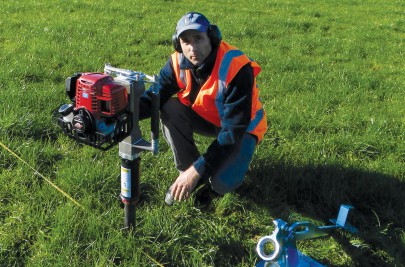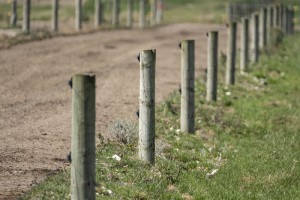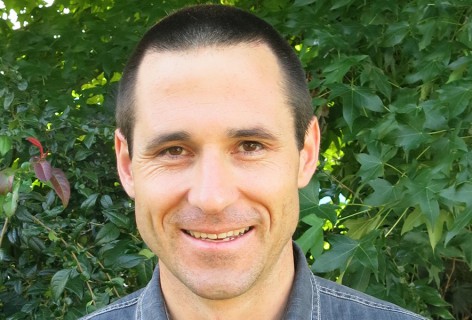A new national soil carbon monitoring system for agricultural land

Dr Paul Mudge driving in a soil core, Tarras, Central Otago
However, there are few direct measurements of soil carbon change available, and the data we have are largely based on unrepresentative historical soil survey sampling sites of agricultural land. To provide the necessary data, Manaaki Whenua has begun the first phase of a new nationwide baseline soil carbon measurement study.
The overall plan is to monitor changes in soil carbon at 500 sites across the country within each of five broad landuse classes: cropland, horticulture, dairy pasture, flat-rolling drystock pasture, and hill-country drystock pasture. Sites will be revisited on a 4-year rolling resampling to determine any change in soil carbon. The system is designed to be able to detect a change of about 2 tonnes of carbon per hectare within each of the five classes.
This national benchmarking is being complemented by work to enable farmers to determine soil carbon and carbon changes on their individual farms. Interest from farmers is recognition of the importance of soil carbon for overall soil health and the potential for soil carbon to offset greenhouse gas emissions. Our scientists are currently working with consultants and farmers to create user-friendly, onfarm soil carbon measurement systems.
The national soil carbon monitoring project is a collaboration between Manaaki Whenua and the University of Waikato, and is funded by the New Zealand Agricultural Greenhouse Gas Research Centre (NZAGRC) and MPI. Funding for the initial statistical design phase came from MPI via the Global Research Alliance on Greenhouse Gases.

